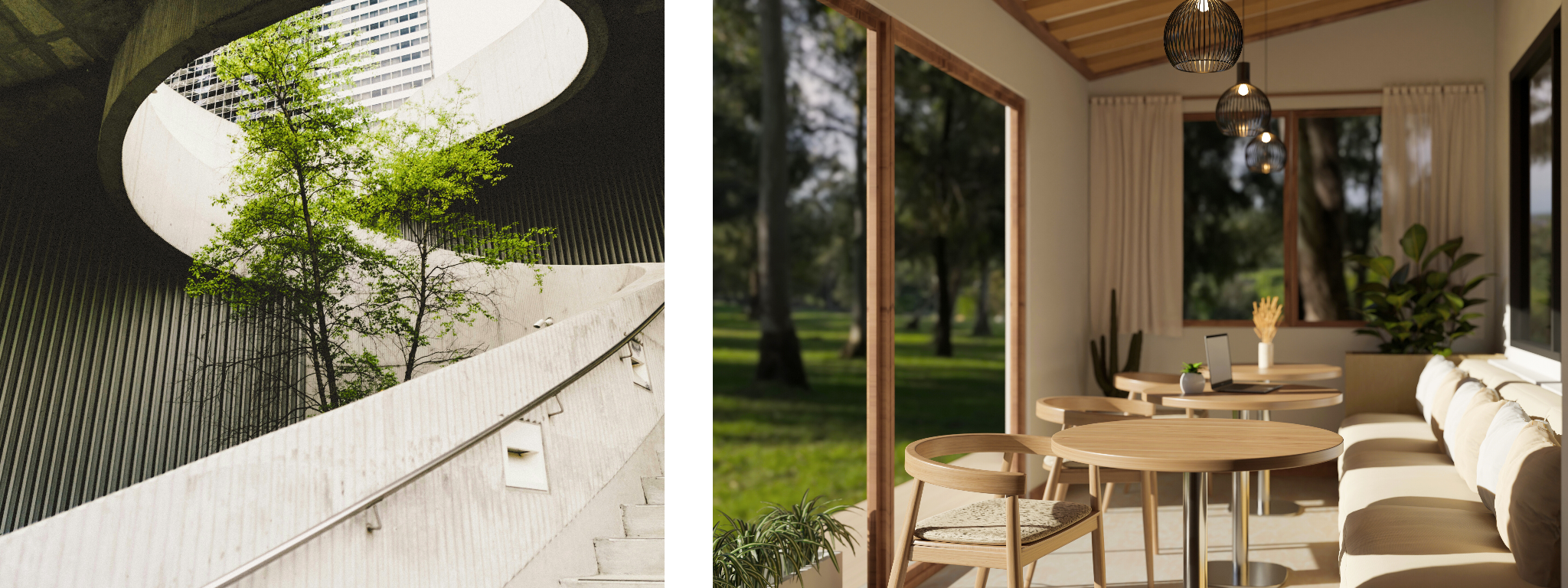In Ireland, a career in Interior Design is a recognised profession that shapes the built environment alongside architecture and construction. Designers are expected to balance creativity with technical rigour, working alongside engineers, developers and contractors to deliver safe, sustainable, and inspiring spaces.
Such a shift has shone a light on formal qualifications; they’ve become more important now than ever before. Regardless of whether you are engaging with employers, clients or professional bodies, all three are increasingly expecting a degree-level design education as the standard. This makes sense, as it ensures designers can indeed meet the complex demands placed upon them, navigating regulatory frameworks and advanced digital tools.

Irish Design Industry
Ireland’s design and craft sector continues to be a powerful contributor to economic and cultural life. According to Creative Ireland, the sector is forecast to generate 20,000 additional jobs in design-intensive fields between 2020 and 2026, with a potential €1.4bn uplift in GVA. This growth reflects how design, interiors included, is becoming integral as the economy digitises and invests in the built environment.
The Design & Crafts Council Ireland underscores this point, noting that the wider design and craft economy employs tens of thousands and contributes billions to GDP each year. Interior design is a vital part of that ecosystem, with thousands of active businesses delivering significant revenues annually.
Job Creation and the Construction Industry
This growth is not abstract; it is tied directly to Ireland’s construction and housing pipeline. The National Development Plan is driving major public-sector projects, with tender price inflation projected at 4-5% for 2025 as delivery accelerates. Every new school, hospital, and public building involves interior design work.
On the residential side, the Central Statistics Office reported a 35% year-on-year jump in new home completions in Q2 2025, the strongest first half since 2008. Each new dwelling, and the many renovations underway, requires planning, specification, and materials selection. These are all core tasks for trained interior designers.

Global Trends Reshaping Interior Design
The nature of interior design work is shifting fast. Global trend tracking shows the next wave is defined by experience-led places, AI-enabled workflows, and sustainability; all directly changing briefs for interiors across workplace, retail, and mixed-use schemes.
Digital Tools
On the tools side, adoption of BIM, VR/AR and cloud collaboration has moved into the mainstream of design and construction. Meanwhile, the global interior design market is forecast to expand through 2030, with new construction leading current revenue and remodelling growing fastest. The link between health, wellbeing, productivity and design decisions is now well-established, reinforcing client demand for biophilic strategies, daylighting, acoustics, low-tox materials and energy-efficient solutions.
Workplace and Office Design
The pandemic reshaped offices worldwide. Our homes became our offices. As a result, as every company and employee has carefully navigated their own return to work, many employers are demanding or focusing on spaces that foster wellbeing, productivity, and human connection. The Gensler Global Workplace Survey reports rising demand for socially interactive spaces, while Business Insider highlights the shift towards experience-driven environments.
Growth and Sustainability
Sustainability is among the fastest-growing global trends, with design expected to grow by over 3% annually through 2030. Clients want eco-friendly materials, biophilic principles, and energy-efficient solutions. In Ireland, this aligns with national policy, from green building targets to the NDP. Accredited degree programmes embed sustainability as a core component, ensuring graduates can meet both client expectations and policy requirements.

Interior Design Accreditation and Professional Recognition
In Ireland, there are two main relevant bodies to be aware of when it comes to interior design:
- The Interiors Association
- The Institute of Designers in Ireland
The Interiors Association
The Interiors Association (IA) is Ireland’s national body for professional interior designers and architects. To gain Full Membership, candidates need a recognised Level 7/8 degree in interior design (or related discipline) plus three years’ experience - or a six-year combined education/experience pathway. This signals to clients and employers that members meet rigorous professional standards.
As of 2024, the IA also represents Ireland within the European Council of Interior Architects (ECIA), aligning Irish practice with EU-level norms. This means a degree not only opens doors at home but also supports collaboration and recognition across Europe.

The Interiors Association
The Institute of Designers in Ireland
The Institute of Designers in Ireland (IDI) complements this with multi-disciplinary support for interior and spatial designers through advocacy, events, and community.
For the kind of cross-border work mentioned above, it’s worth noting that the UK’s BIID Registered Interior Designer® standard uses the same six-year benchmark - another reminder that degrees align with international expectations.
Why Degrees Matter
In a nutshell, a degree gives aspiring Irish designers three clear advantages:
-
Professional Recognition: Degrees align with IA Full Membership requirements, giving you a clear professional signal to employers and clients in Ireland.
-
European Alignment: Through the IA–ECIA link, your qualification carries weight in Europe; valuable when collaborating on EU projects.
-
Technical and Project Readiness: Accredited degrees embed the capabilities, codes, BIM, visualisation and sustainability that are now expected on public and commercial projects, especially those linked to the NDP pipeline.
Conclusion: Degrees as the Gold Standard
Ireland’s interior design industry is thriving, fuelled by strong economic growth, a buoyant construction sector, and shifting global trends. But opportunity comes with complexity. Clients and employers increasingly expect designers to combine creativity with deep technical competence, sustainability expertise, and digital fluency.
For those who aspire to collaborate on large-scale projects, achieve professional membership, or build long-term careers at the heart of Ireland’s design economy, degrees remain the gold standard.
At the Interior Design Academy of Ireland, our Higher National Diploma plus BA (Hons) Level 6 Top Up Degree pathway delivers exactly this: the depth of knowledge, professional recognition, and career readiness graduates require to land on their feet in an evolving industry.

FAQ
Best Interior Design Degree in Ireland
The Interior Design Academy of Ireland is a leading choice, offering flexible and accredited programmes.
Why Degrees Matter in Interior Design?
Degrees matter in interior design because they build design skills, develop a professional portfolio, and provide industry recognition. It also helps with career opportunities and client trust.
How to Become an Interior Designer?
To become an interior designer, start with a recognised interior design course or degree, build a strong portfolio, gain practical experience, and network to grow career opportunities.

